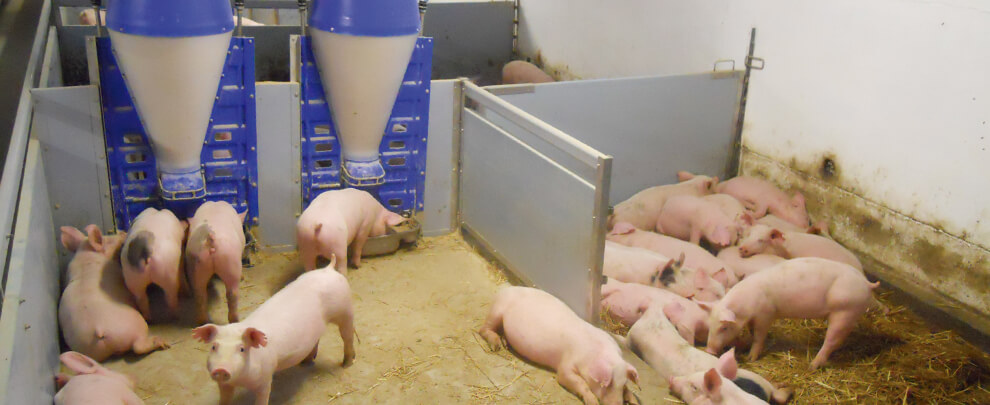Blog
Blog

Challenges and opportunities of the pig sector in Hungary
30th March 2021 - News
Pork is an essential food in Hungary’s lifestyle, and the tradition of raising and eating pigs is deeply rooted in their culture. However, the swine population has stagnated in recent years due to the African swine fever (ASF), which has caused significant price rises, restrictions on Hungarian exports and has made the country a net importer.
Production
According to the National Statistical Office, the pig population in Hungary is close to 2.9 million, a figure that has been declining in recent years.
Mangalica is the national pig breed par excellence in Hungary. It is one of the oldest pig breeds in Europe, whose origin is around 1830. These animals stand out for their long and thick hair, which allows them to adapt to the Hungarian steppe conditions. However, this breed represents only 2% of the national pig stock. These pigs are raised and slaughtered in Hungary, and the species is considered the fattest in the world, reaching up to 70% fat.
Only 30% of the Mangalica meat produced remains in the country and is used in products such as sausages, chorizo, or bacon and is served in high-level restaurants. The remaining 70% is exported to Asia and America.

Image of a pig farm in Hungary. Photo: Rotecna.
Impact of the ASF
The arrival in Hungary of the African swine fever in April 2018 generated a crisis in the Hungarian pig sector, causing the pig population to stagnate, which has generated significant increases in prices and restrictions on pork exports.
According to the Hungarian Ministry of Agriculture, the country does not present active cases of ASF in domestic pigs but only in wild pigs. In the first quarter of 2020, 4,085 infected wild boars were detected in the European Union, of which 1,371 corresponded to Hungary. As a consequence, countries such as Serbia, Japan, Taiwan, Singapore, and South Korea imposed temporary restrictions on the import of pork and wild boar from that country, which has meant a tremendous economic impact for the Hungarian pork industry due to the fall in exports and the consequent reduction of the national purchase price.
Meat market
As we have mentioned, the ASF caused a drop in pork exports in 2018, which recovered slightly in 2019: while in 2018 exports fell 22.29% compared to the previous year, in 2019 they reached 339 million euros, 25.63% more than in 2018. However, the figures are far from the 348 million euros obtained in 2017. As for Hungarian pig products’ main destination markets, Romania stands out with a share of 34.30% in 2019, Italy and Croatia.
The trend with its ups and downs recorded in exports, is different in terms of imports, as since 2016, Hungary has been an importing country and the trend has only been increasing since then. The reason is that, over the last three years, domestic consumption has exceeded local production levels. Thus, in 2019 the highest value was registered, with 333 million euros, representing an increase of 20.51% compared to the previous year. In this context, imports represent almost half the volume of Hungarian national production.
"Hungary is a country with great potential as a target market for the
pork sector since Hungarians are pig lovers."
Hungary has become a net importer of pork because there are significant growth opportunities for foreign producers who want to open a gap in the Hungarian market and local producers who wish to strengthen their presence. As for Spain, the country ranks second among pork suppliers to Hungary, with a share of 18% of the total and a growth of 197% since 2015, surpassed only by Germany. On the other hand, Spain ranks ninth as a consumer of Hungarian pork exports, with a share of 2.9% of the total, making it a very relevant trading partner.
Consumption
Pork is essential in Hungary’s lifestyle and is the main ingredient in the vast majority of dishes in its gastronomy, being the second most consumed meat in the country, behind poultry. Its consumption has grown in recent years, and pigs are the second most consumed animal protein in the country, with an average of 30 kilos per capita per year. This growth, in part, has occurred due to the reduction in the pork tax introduced by the Hungarian government in 2016, which went from 27% to 5%, intending to stimulate the consumption of this meat. This measure was very successful, as the competitiveness of companies and the national consumption of pork increased. Furthermore, the price decrease generated substantial savings for consumers.
Future
According to the perspectives of the Agricultural Outlook 2020-2029 of the OECD, meat production and consumption levels are expected to reach a low point in the coming years due to multiple ASF outbreaks. However, Hungary is a country with great potential as a target market for the pork sector since Hungarians are pig lovers. Recent culinary trends may provide opportunities to enter that market.






